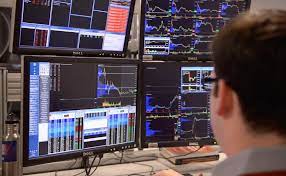Prop trading, short for proprietary trading, is a high-stakes financial activity that has intrigued many with its allure of substantial profits. Unlike traditional trading where traders manage client funds for a commission, proprietary trading involves firms trading their own capital in pursuit of direct gains. But how do prop trading actually make money? While there are no guarantees in the world of finance, prop traders employ specific methodologies and strategies to maximize returns. This article breaks down the fundamentals to help you understand what makes this profession tick.
Leveraging a Firm’s Capital
Prop traders operate within firms that provide them access to significant capital reserves. With this backing, traders can execute larger trades than they could as independent retail investors. This structure not only amplifies potential profits but also allows proprietary traders to take advantage of opportunities that might require substantial financial resources. High-volume trading is crucial, as even small price movements can translate into significant gains when trading at scale. For example, market makers often use this approach in tight spreads to churn out consistent profits.
Advanced Technology and Rapid Execution
A key advantage for prop traders lies in their access to cutting-edge tools and technology. Proprietary trading firms frequently utilize state-of-the-art trading algorithms and platforms for high-frequency trading (HFT). Speed matters in prop trading, as market conditions change within milliseconds. With advanced systems, traders can analyze market data, place trades, and monitor risks faster than the average investor.
For example, algorithms can identify arbitrage opportunities or inefficiencies in the market and execute trades almost instantly, capturing profits before other traders even notice the opportunity. Technology empowers prop traders to compete effectively in fast-moving markets, such as forex or commodities trading.
Exploiting Market Inefficiencies
Prop trading is as much about strategy as it is about timing. Traders dedicate countless hours analyzing data to identify inefficiencies or anomalies in the market. These inefficiencies might arise from temporary imbalances in supply and demand, geopolitical news, or irregularities across markets.
One common example is arbitrage, which involves profiting from price discrepancies between different exchanges or asset classes. For instance, if a stock is priced lower on one exchange but higher on another, a trader might buy on the former and sell on the latter to lock in the price difference as profit.
Risk Management is Key
Making money as a prop trader isn’t just about taking large bets; it’s about managing risk effectively. Successful traders understand that no opportunity is without potential downsides and use calibrated strategies to mitigate these risks. Techniques like stop-loss orders, position sizing, and portfolio diversification ensure traders don’t expose themselves to undue losses.
Firms also often set strict rules for capital limits and potential drawdowns, reinforcing a culture of disciplined trading. This framework not only safeguards the firm’s capital but also maximizes a trader’s survival over the long term.
Revenue Sharing Models
Once profits are generated, the next question is how they are distributed. Prop traders generally work under a profit-sharing agreement. This arrangement allows traders to take home a percentage of their earnings while the firm retains the rest. High-performing traders can achieve lucrative payouts, making the role incredibly rewarding for those with the right skillset and mindset.
It’s common for firms to incentivize traders with higher profit splits as they consistently deliver results, reinforcing a meritocratic structure in the workplace.
Continuous Learning and Adaptation
Lastly, a pivotal factor in how prop traders sustain profitability is their commitment to continuous growth. Markets are constantly evolving, and what works today might not work tomorrow. Traders dedicate time to expanding their knowledge base, refining strategies, and staying updated on market trends.
From studying historical trends to attending industry workshops, the learning never stops for a successful prop trader. This adaptability is crucial to staying competitive in a dynamic trading ecosystem.
Final Thoughts
Prop trading remains a challenging but highly rewarding profession for those who can master it. With access to significant capital, advanced technology, and a razor-sharp focus on strategy and risk management, prop traders capitalize on market opportunities that others might overlook. For those willing to invest time and effort into honing their skills, the potential for financial success is vast.
